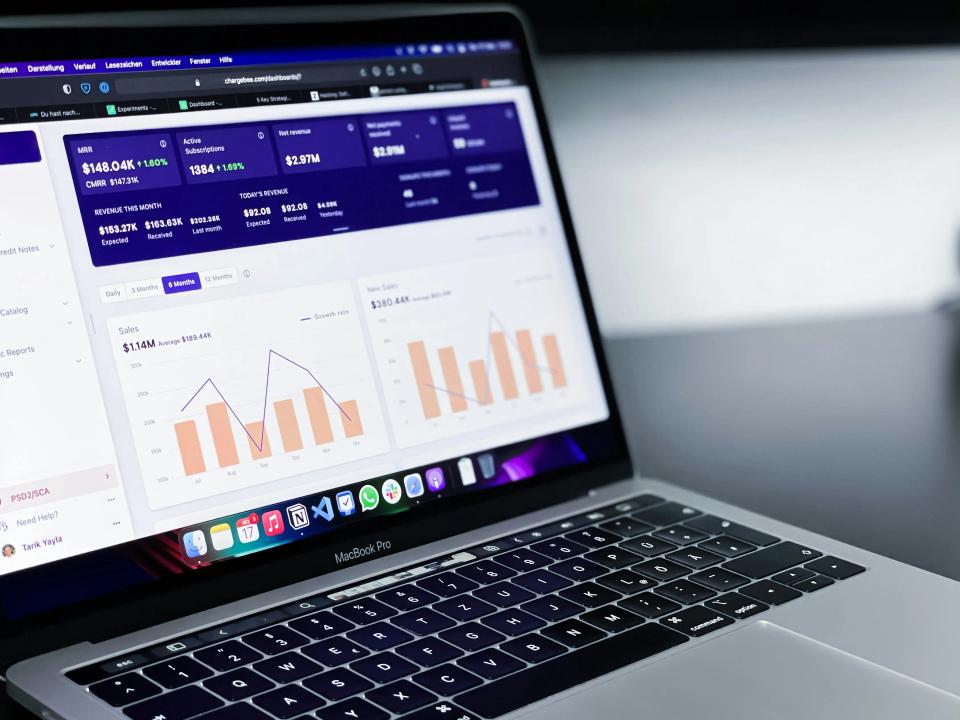Ever felt that cold dread? The one that hits when you realize your digital castle, your website, might be vulnerable? Did you know a single security breach can not only cost thousands but also tank your hard-earned search rankings overnight? For small businesses, the average cost of a data breach can range from a staggering $120,000 to $1.24 million, as PurpleSec's analysis of data breach costs reveals, a sum that could cripple your operations and shatter customer trust.
Too often, website owners and even developers see Technical SEO and Web Security as distant cousins, living in separate houses. They meticulously optimize for keywords, build backlinks, and then, almost as an afterthought, consider security plugins or basic firewalls. This siloed thinking is a dangerous oversight in today's digital landscape where threats lurk around every corner.
The truth? Technical SEO and web security are not just related; they are two sides of the same powerful coin. Implementing robust technical SEO best practices inherently fortifies your website's defenses, creating a synergy that leads to better search engine performance, unwavering user trust, and ultimately, a more dominant online presence. This guide is crafted for you – the ambitious website owner, the diligent web developer, the savvy digital marketer, and the vigilant IT professional – seeking actionable strategies to protect and propel your digital assets.
By the end of this journey, you'll grasp the critical interplay between these two domains. You'll be armed with practical, step-by-step insights to transform your website into a secure, high-performing fortress that search engines love and users trust implicitly. At CaptivateClick, we believe in building digital experiences that are not just visually stunning and user-friendly, but are fundamentally robust, secure, and engineered for peak performance – a philosophy woven into every strategy we deploy.
Why Web Security is a Technical SEO Concern (And Vice-Versa)
Think Google doesn't care about your site's security? Think again. Search engines, especially Google, are on a mission to provide users with the safest, most reliable results. This means they actively prioritize websites that demonstrate strong security measures, making web security an undeniable Technical SEO concern.
Google has been very clear: HTTPS is a ranking signal. Secure sites get a nod, a small boost that can make all the difference in competitive SERPs. Conversely, sites flagged for malware or those that have been hacked face severe penalties, including ominous warnings in search results or even complete de-indexing, effectively making them invisible. According to Wordfence, a shocking 45% of hacked sites never fully recover their pre-breach traffic levels, a devastating blow to any business relying on organic visibility.
Beyond the algorithms, consider the human element – your visitors. That little padlock icon in the browser, the "HTTPS" prefix, these are silent trust builders. Users feel safer sharing information, making purchases, and engaging with secure sites. Secure sites also tend to load faster and offer a smoother experience, key components of good UX and, consequently, better SEO. A security breach, on the other hand, can instantly obliterate brand reputation and send users fleeing to your competitors, a costly churn you can't afford.
What about the very foundation of SEO: crawlability and indexability? Security vulnerabilities can throw a wrench in the works. Misconfigured firewalls or a site crippled by a DDoS attack can block search engine crawlers, preventing them from accessing and indexing your content. As Google Search Central case studies on fixing hacked sites illustrate, malicious scripts can even redirect crawlers to spam pages, leading to crawl errors and de-indexing. Ensuring search engine bots can efficiently navigate your site without security roadblocks is paramount. Many core technical SEO tasks, such as writing clean code, optimizing server configurations, and performing regular updates, directly contribute to a more resilient and secure website, proving the deep-seated overlap.
Foundational Technical SEO Practices for Enhanced Web Security
Ready to lay a virtually impenetrable foundation for your website? It starts with embracing practices that serve both your SEO goals and your security posture. These aren't just "nice-to-haves"; they are the bedrock of a successful and safe online presence.
HTTPS Everywhere: The Gold Standard
Imagine sending your most sensitive information through the mail on a postcard. That's what HTTP does. HTTPS, powered by SSL/TLS certificates, is like sending that information in a sealed, armored truck, encrypting data in transit. This protects crucial user data like logins, payment details, and personal information from prying eyes.
The security benefits are undeniable, but what about SEO? As Google officially confirmed, HTTPS is a ranking signal, giving secure sites an edge. Beyond the ranking boost, HTTPS enables browser trust signals (the coveted padlock) and preserves referral data, giving you clearer insights into your traffic sources. Implementing it involves choosing the right SSL certificate – providers like Let's Encrypt offer free, automated options – ensuring site-wide redirection from HTTP to HTTPS, and deploying HTTP Strict Transport Security (HSTS) to enforce secure connections.
Secure & Reliable Hosting Infrastructure
Your hosting provider is the landlord of your digital property. Would you build your dream home on unstable, unsafe land? Of course not. The same applies to your website; its security and performance are fundamentally tied to your hosting infrastructure.
Look for hosting providers that shout about their security measures: robust firewalls, proactive DDoS protection, regular malware scanning, and a commitment to timely server patching. These features aren't just buzzwords; they are your first line of defense against a barrage of online threats. At CaptivateClick, our Hosting & Maintenance strategies are built around providing this very peace of mind, ensuring your site rests on a secure and high-performance foundation.
Clean Code & Secure Development Practices
Sloppy code is an open invitation to hackers. Well-structured, validated code, on the other hand, is inherently less prone to common exploits. It’s about building a fortress from the inside out, not just patching holes as they appear.
Adhering to OWASP's Secure Coding Practices, such as diligent input validation and output encoding, can prevent devastating attacks like SQL injection and Cross-Site Scripting (XSS). Using up-to-date libraries and frameworks, and religiously avoiding deprecated elements, closes known security loopholes. Beyond security, clean code is easier for search engine bots to parse and typically results in faster loading times – a win-win for both security and SEO. For developers looking to dive deeper, exploring advanced technical optimization techniques can further harden your codebase.
Key Technical SEO Tactics that Double as Security Measures
Many of your routine Technical SEO tasks are unsung security heroes. By optimizing for search engines, you're often, perhaps unknowingly, bolstering your website's defenses. Let's uncover these dual-purpose tactics that deliver twice the value.
Regular Software & Plugin Updates
Think of outdated software as leaving your digital doors and windows wide open. Your Content Management System (CMS) – be it WordPress, Joomla, or another platform – along with its themes and plugins, are prime targets for attackers if not kept current. Tenable Nessus highlights that outdated plugins are common vulnerabilities exploited by hackers.
The best practice? Don't just update; strategize. Implement a schedule for regular updates and, crucially, always test these updates in a staging environment before deploying them to your live site. This prevents unexpected compatibility issues from breaking your site while ensuring you're patched against the latest threats. This diligence is a core part of services like CaptivateClick's "Security & Updates," designed to keep your digital assets protected proactively.
Implementing HTTP Security Headers
HTTP security headers are like giving specific, non-negotiable instructions to your visitors' browsers on how to behave securely when interacting with your site. Headers such as X-Content-Type-Options, X-Frame-Options, X-XSS-Protection, Content-Security-Policy (CSP), and Referrer-Policy act as powerful shields. For instance, as detailed by Mozilla's documentation on Content-Security-Policy, CSP can prevent a wide range of injection attacks, including XSS.
These headers help mitigate serious risks like cross-site scripting (XSS), clickjacking, and MIME-type sniffing attacks, which can compromise user data or deface your website. Implementing them is often straightforward, typically involving adding a few lines of code to your .htaccess file or server configuration. The Mozilla Developer Network also provides excellent guidance on headers like X-Content-Type-Options, which prevents browsers from misinterpreting content types and inadvertently executing malicious code.
Robust Website Backup Strategy
Imagine the worst happens: your site is hacked, data is corrupted, or your server crashes. Without a reliable backup, you're looking at a catastrophic loss of data, time, and money. A robust backup strategy is your ultimate safety net, your digital life raft.
Effective backup strategies involve more than just occasional saves. Aim for regular backups – daily for dynamic sites, weekly for more static ones – and store these backups in multiple, secure, off-site locations. Most importantly, periodically test your restoration process to ensure your backups are viable and you can recover quickly when disaster strikes. This peace of mind is integral to comprehensive hosting and maintenance plans.
Managing Crawlability: Robots.txt & Meta Tags for Security
While not a foolproof security measure on its own, your robots.txt file can play a role in deterring casual snooping. You can use it to instruct search engine crawlers to stay away from sensitive areas of your website, such as admin login pages or private directories. This helps keep these areas out of public view and reduces their exposure.
For pages that should never appear in search results – perhaps internal documents or test pages – the noindex meta tag is your friend. By adding <meta name="robots" content="noindex"> to the HTML head of a specific page, you tell search engines not to include it in their index. This is a simple yet effective way to control what parts of your site are publicly discoverable, adding another layer to your security-through-obscurity approach.
Site Speed & Performance Optimization
Can a faster website be a more secure website? Absolutely. Efficient code, optimized images, and a minimal number of plugins not only contribute to lightning-fast load times but can also mean a smaller attack surface with fewer potential vulnerabilities. Streamlining your site reduces complexity, and less complexity often means fewer places for security flaws to hide.
Techniques like browser caching, code minification (stripping unnecessary characters from HTML, CSS, and JavaScript), and using a Content Delivery Network (CDN) are staples of technical optimization for faster websites. These deliver a dual benefit: a significantly better user experience that Google rewards with higher rankings, and a leaner, potentially more secure setup. Investing in performance optimization is an investment in both visibility and resilience.
Advanced Security Considerations with Technical SEO Implications
Once you've mastered the fundamentals, it's time to explore advanced security measures that also carry significant Technical SEO weight. These strategies provide an even stronger shield for your digital assets while ensuring search engines can continue to love your site.
Web Application Firewalls (WAFs)
Think of a Web Application Firewall (WAF) as a highly intelligent security guard standing between the internet and your website. Its primary job is to filter and block malicious HTTP/S traffic before it even reaches your server. This includes attempts to exploit common web vulnerabilities, such as SQL injection or cross-site scripting.
By neutralizing these threats, a WAF not only protects your data and your users but also helps maintain site availability, which is crucial for SEO. As Cloudflare explains how their WAF mitigates OWASP Top 10 threats, this protection prevents breaches that could lead to your site being de-indexed or flagged as unsafe by search engines. Consistent uptime and a clean bill of health are vital for maintaining search rankings.
Regular Security Audits & Vulnerability Scanning
You wouldn't wait for a burglar to tell you your locks are weak, would you? A proactive approach to security involves regularly auditing your website and scanning for vulnerabilities. This means actively seeking out and patching weaknesses before malicious actors can discover and exploit them.
Tools like OWASP ZAP, or commercial scanners such as Tenable Nessus for web application scanning, can help identify issues like outdated software, misconfigured security settings, or common coding flaws. These audits often uncover issues that could also negatively impact SEO, such as broken links or server errors, making them a valuable exercise for overall site health.
Monitoring & Alerting
Early detection is key to minimizing the damage from any security incident. You need systems in place that alert you to suspicious activity or potential breaches the moment they occur. This allows for a swift response, which can be the difference between a minor hiccup and a major catastrophe.
Leverage tools like Google Search Console, which has a dedicated "Security Issues" tab to report if Google detects malware or other security problems on your site. Regularly review server logs for unusual patterns, and implement uptime monitoring services that notify you immediately if your site goes down. The faster you know about a problem, the faster you can fix it and protect your users and your SEO rankings.
Content Delivery Network (CDN) Security Features
Content Delivery Networks are widely known for their ability to speed up websites by distributing content across multiple servers globally. However, many modern CDNs offer much more than just speed; they come packed with powerful security features. For instance, Astra's data indicates that 45% of breaches target cloud environments, underscoring the need for secure CDN configurations.
Many CDNs provide robust DDoS mitigation services, effectively absorbing and deflecting massive influxes of malicious traffic designed to take your site offline. Some also include built-in WAF capabilities and sophisticated bot management tools to filter out harmful automated traffic. As Cloudflare details its DDoS protection and WAF capabilities, these features not only keep your site secure and available but also contribute positively to SEO by ensuring consistent uptime and performance.
Tools & Technologies to Streamline Your Efforts
Navigating the landscape of technical SEO and web security can feel daunting, but thankfully, a wealth of tools and technologies exists to simplify and automate many of these critical tasks. Arming yourself with the right toolkit can make all the difference in maintaining a secure and high-performing website.
Google Search Console is an indispensable free tool. Beyond its SEO insights, its "Security Issues" reports are vital for early warnings if Google detects malware or hacking on your site, and its crawl stats can indicate if security issues are blocking bots. For implementing HTTPS, SSL certificate providers like the free and automated Let's Encrypt, or commercial options such as Comodo and DigiCert, are essential.
If you're using a CMS like WordPress, security plugins are your frontline defenders. Popular choices like Wordfence, Sucuri, and iThemes Security offer features like firewalls, malware scanning, and login protection. Wordfence, for example, provides extensive research on the impact of hacks and how to recover, underscoring the value of such tools.
To proactively check your defenses, online scanners are invaluable. Qualys SSL Labs provides an in-depth analysis of your SSL/TLS certificate setup, while SecurityHeaders.com and Mozilla Observatory check your implementation of HTTP security headers. Finally, performance testing tools like Google PageSpeed Insights and GTmetrix not only help you optimize for speed but often reveal security-related optimization opportunities, such as outdated JavaScript libraries. Exploring a curated list of technical optimization tools for digital marketers can further expand your arsenal.
Conclusion: Building a Secure and Search-Optimized Future
The journey through the intertwined paths of technical SEO and web security reveals a powerful truth: they are not separate disciplines to be tackled in isolation, but rather synergistic forces that, when combined, create a formidable digital presence. Protecting your website is not just about preventing loss; it's about building trust, enhancing user experience, and ultimately, achieving greater visibility and success in the competitive online arena.
The key takeaway should be the undeniable value of a proactive, layered approach. From foundational HTTPS implementation and secure hosting to advanced WAFs and regular security audits, each measure contributes to a more resilient and trustworthy website. Remember, even small, consistent changes can make a significant difference in fortifying your defenses and boosting your SEO performance.
Don't wait for a crisis to prioritize your website's health. Start implementing these strategies today. Empower yourself with the knowledge and tools to build a digital future that is not only optimized for search engines but is also a safe haven for your users.
Ready to fortify your website and skyrocket its SEO performance? Are you prepared to turn your online presence into an unbreachable fortress that search engines adore? Contact CaptivateClick today for a comprehensive Technical SEO and Security Audit. Our experts are eager to help you implement these critical strategies, ensuring your website is not only captivating and user-friendly but also secure and meticulously optimized for maximum visibility and impact. Let us help you explore the impact of technical optimization on your SEO rankings, refine your hosting and maintenance strategies for security and updates, and leverage advanced techniques for developers to build a truly dominant digital platform.













